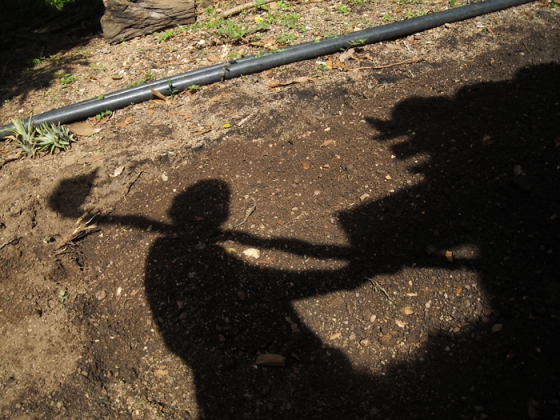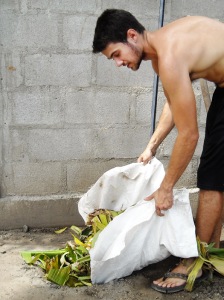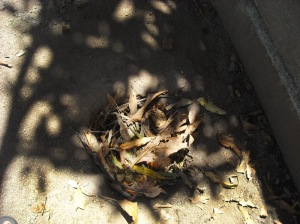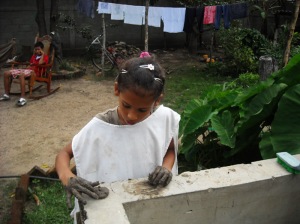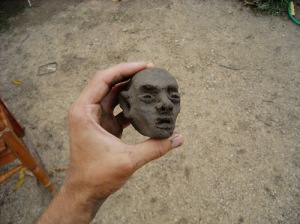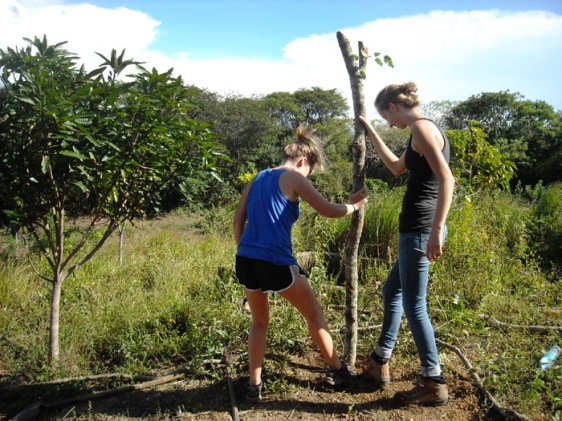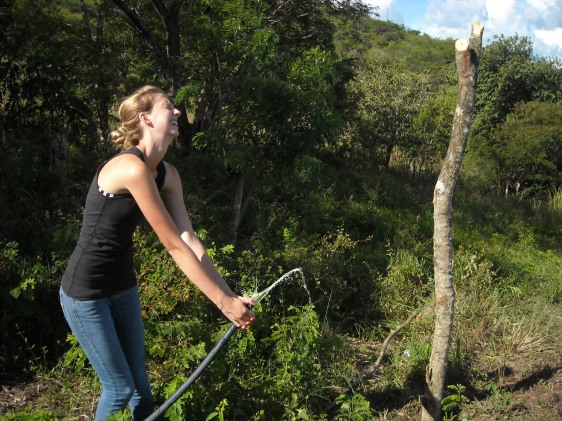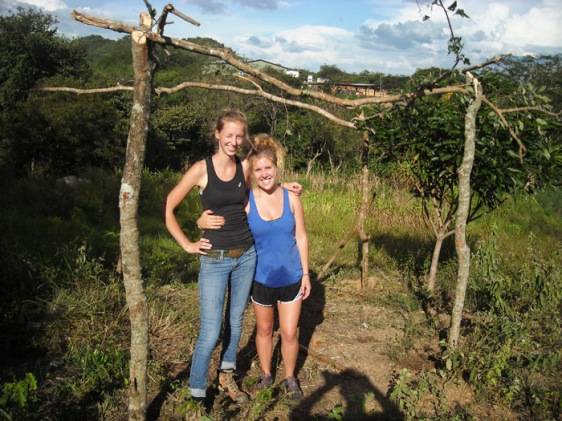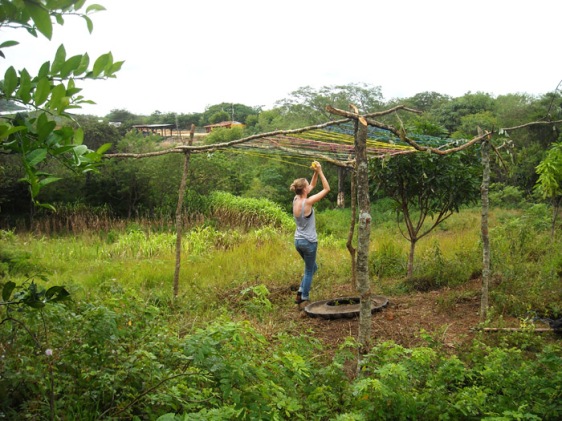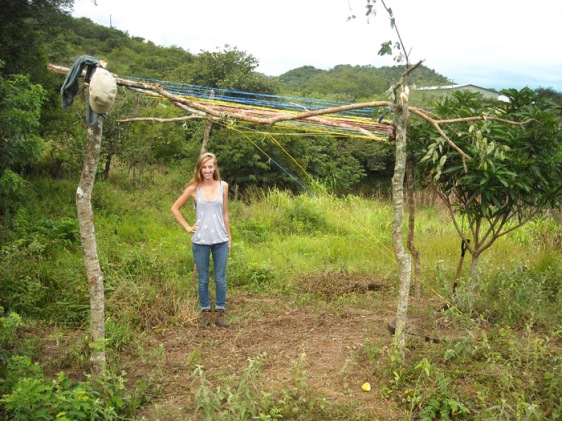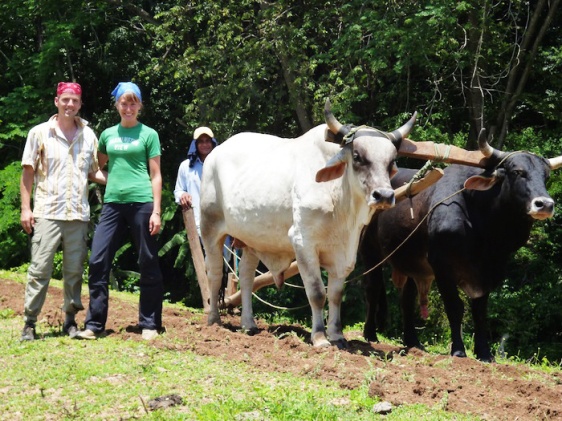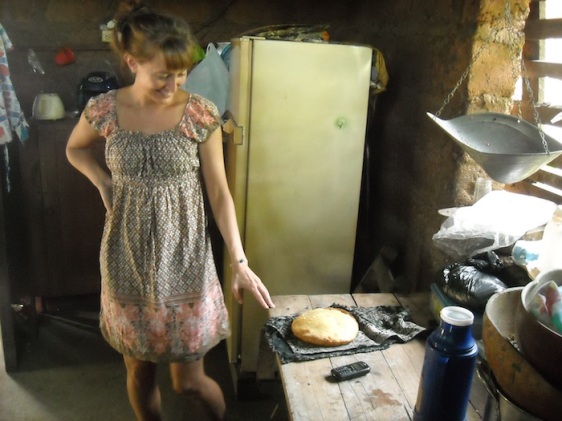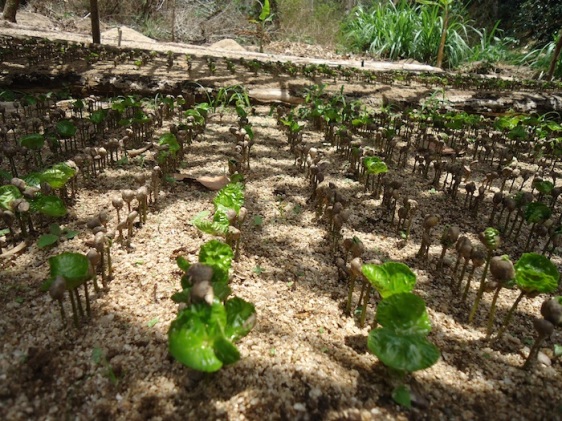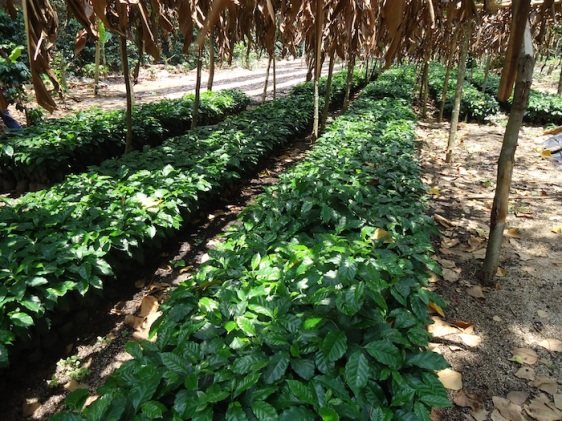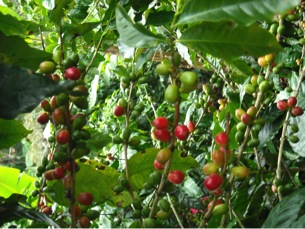It’s been an interesting two weeks. I would have liked to update last week, but I really like to include pictures with these things, and unfortunately my American batteries just ran out and the only batteries you can buy in Nicaragua last about one minute. Aaron lent me a couple for bit.
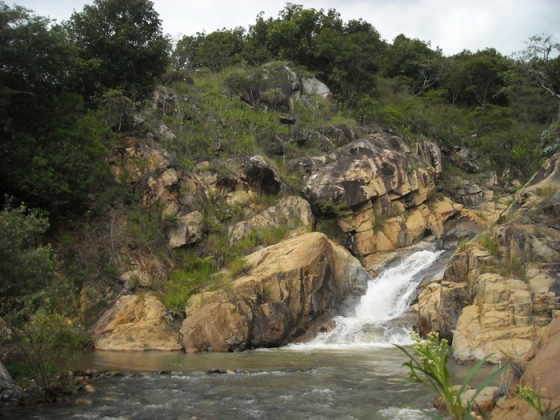
Aaron and I commented on how sometimes Nicaragua looks like Eastern Oregon. There was more waterfall up those rocks.
There have been 3 major events these past two weeks.
One is the leaving of Hiromi and Aaron. Sad to see them go. Noemy and Bismark were too I think. They were in every way the ideal volunteers, hard working and eager to help, and just curious about how to live like Nicas.
On one of their last days Bismark and Noemy took us up a river in Mozonte to a beautiful little waterful. Walking up ahead of Hiromi and Noemy I cast my ears back to catch snippets of conversation. I think its safe to say that both groups, the volunteers and the family, have learned incredible amounts about a different way of life. I hope as well, that maybe they’ve learned a little about themselves through the experience.
“That room is open for you whenever you want to come and visit,” said Noemy
“Thank you Noe, I hope I can sometime,” said Hiromi.
“You’d still want to come back and live in poverty?”
“Yes of course, we love it here!”
I thought it was a nice little snippet. I like to think that maybe that’s the greatest gift a volunteer can give, the belief that there is something special about the way that the family lives; something special enough that it would bring people back.
Two would be Chloe from Earlham getting a good start on baking with Noemy. She hasn’t been up tons, but Noemy likes having the extra hand in the kitchen, and again I think that sometimes just seeing that someone is interested in and likes what she’s doing gives her work more importance and makes it more interesting for her. Chloe helped Noemy make Hiromi’s brownie recipe, and I was incredibly pained that I had to leave to teach a class before they finished baking.
Three is really just me feeling chuffed about my own work. After a great deal of struggle with solutions for how to keep chickens out of the garden, I decided to try rocks. It seems to be working. I planted radishes, onions, and beets in a long bed out back behind the house.
I also built a simple box for compost out of some wood I cut and some old roof tiles laying around the yard (I’ll get some pictures sooner or later). Claudia mentioned that there was some composting happening there before but it got sort of left to the weeds. I’m not sure where it all went. It was my hope that if there was just a little space for it, the family might use it and future volunteers might be able to encourage it’s use. Well, to my pleasant surprise, upon seeing the finished compost bin Bismark was very excited by the idea and started gleefully chucking food-waste in. It made me feel good to see, I just hope that interest continues.


